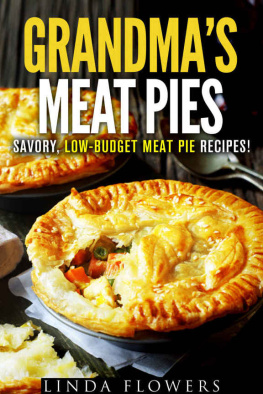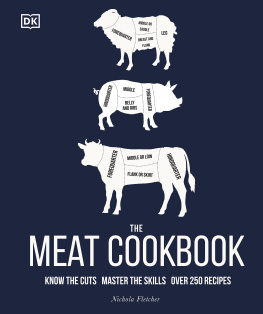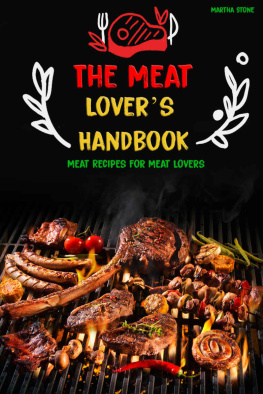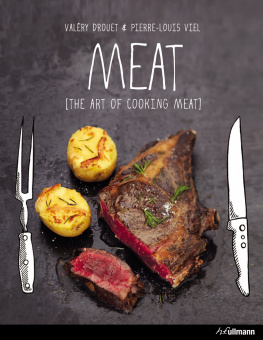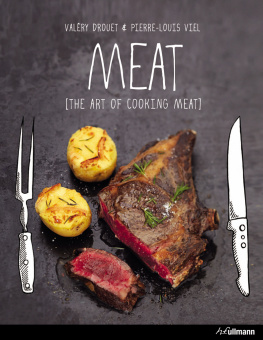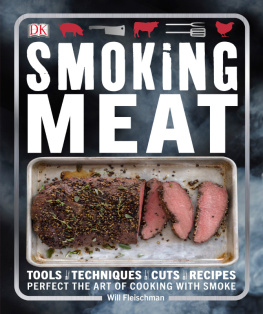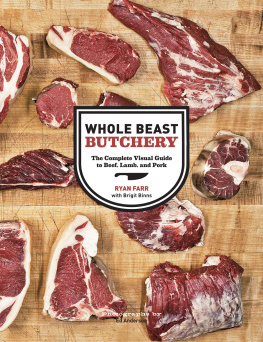
CLASSIC TECHNIQUES AND AWARD-WINNING RECIPES FOR SELECTING, CUTTING, AND COOKING BEEF, LAMB, PORK, POULTRY, AND GAME
DAVE KELLY OF RUBY & WHITE
Foreword and contributed recipes by GLENN KEEFER, Owner, and JOHN HOGAN, Executive Chef, KEEFERS of Chicago

First published in the USA in 2013 by Fair Winds Press, a member of Quayside Publishing Group
100 Cummings Center
Suite 406-L
Beverly, MA 01915-6101
www.fairwindspress.com
2013 Fair Winds Press, an imprint of Rockport Publishers, Inc. and Toucan Books Ltd. All rights reserved. No part of this book may be reproduced or utilized, in any form or by any means, electronic or mechanical, without prior permission in writing from the publisher.
17 16 15 14 13 1 2 3 4 5
Digital edition published in 2013
Digital Edition: 978-1-61058-884-3
Softcover Edition: 978-1-159233-581-7
For Toucan Books
Managing Editor | Ellen Dupont |
Editor | Judith Samuelson |
Designer | Lee Riches |
Special photography | Mark Winwood |
Proofreader and indexer | Andrea Chesman |
Additional writing | Genevieve Taylor |
Additional recipes | Jacqueline Bellefontaine |
Contents
Cuts:
Cuts:
Cuts:
Cuts:
Cuts:
Cuts:
Foreword

T he art of selecting great meat means selecting a purveyor you can trust to deliver consistent quality day in and day out. Ive always chosen to work with artisans and suppliers who are as dedicated to their craft as we are to ours. Ive spent my entire career searching for and selecting the best meat available. When I was asked to participate in the creation of this book I felt an immediate kinship with the artisans at Ruby & White, despite our living on opposite sides of The Big Drink.
Our quest to find and serve great meat began the same wayby establishing unwavering standards, then finding like-minded farmers and ranchers who could meet or exceed those standards with consistency and integrity.
My own journey to find great meat began twenty-one years ago, when I was the general manager of the Chicago Ruths Chris Steakhouse. I invited the three top suppliers of beef to bring their best steaks. These were companies who, at that time, supplied the three best steakhouses in Chicago: Mortons, Ruths, and Gibsons. It was a blind taste testonly our broiler cook knew which steak was which. The owners of Ruths and I tasted the steaks, and we all chose the same steak as the best. I still buy from this same supplier 21 years later. The meat purveyor-restaurant relationship is unique. It assumes trust but is built on a set of control criteria that makes a prenuptial agreement look friendly.
PRIMED FOR SUCCESS
Great steak has lots of marbling and is graded as USDA prime. Only two percent of the beef produced in the United States earns the grade of prime. Steaks should have generous fat content, not in the form of translucent, grisly connective tissue, but rather lots of flecks of snow-white fat throughout the meat. The fat should melt to the touch with the heat of your hand. Enzymes in this lush meat break down the fibers during the aging process.
Keefers welcomes diners who appreciate the unrivalled quality of its meat.
There are two forms of aging: wet or dry. How the meat is aged makes a big difference in the flavor. Ideally, dry-aging is done in a walk-in cooler lined with cedar or redwood with no moisture. Some come outfitted with black lights rather than incandescent bulbs to eliminate condensation and the opportunity for mold. The meat, still in primal cuts (large, distinct sections), is hung so as to get maximum ventilation; some use fans. Dry-aging makes the meat shrink but yields a concentrated, robust flavor thats tangy and rich. Wet-aged beef is aged enclosed in plastic and has a sweeter flavor profile with more juices. In both cases, aging should take place at very low temperatures.
Both Keefers and Ruby & White age our beef for approximately 30 days. There are some who age upwards of 50 days, which can be downright offensive if you are not accustomed to heavily aged beef, though some love that funky flavor.
STEAK NEEDS A LITTLE TLC
The trick to serving great steak is in the handling of the meat as much as the provenance. Great steak is about the way the meat is seasoned, the temperature at which the steak is aged, the temperature at which it is cooked, how it is rested, and the temperature of the plate on which it is served, as well as where it comes from. Keefers Executive Chef, John Hogan, uses a liberal dose of sea salt and crushed black pepper just before putting steaks on our specially built broiler, which can reach insane temperatures of 1,800 degrees Fahrenheit. Once the steak is cooked near to its desired temperature, the steak must be rested, meaning it needs to sit away from a high heat for a few minutes while the juices settle down and the interior color of the steak evens out. The center color should be evenly matched with the entire inside of the steak. Chef John then tops all steaks with Maitre d Hotel compound butter, made with sweet butter, lemon juice, shallots, and fresh parsley.
PROVENANCE AND ORIGIN
We also buy specially raised beef from Bob and Penny Lafin of Windy Hill Farms in Grant Park, Illinois. This beef is antibiotic- and hormone-free. Bob and Penny use non-GMO corn and molasses to feed their Black Angus cattle. They are careful to use whole fresh field corn, not the corn by-product of ethanol production that some farmers use.
WELL-DESERVED PRAISE
Over the past 11 years, Keefers Restaurant has earned the following accolades: named Best of Chicago for Steak by the Food Network; listed as One of Americas Top 10 Steakhouses by Playboy magazine; profiled in Its not Hip; Its Perfection in Crains Chicago Business, Check Please!; voted Best Place for Business Dining by readers of Crains Chicago Business; named one of the restaurants of the decade by Phil Vettel of the Chicago Tribune; and recommended by The Michelin Guide.
Keefers Restaurant have served both politicians and celebrities, ranging from Barack Obama to Beyonc, but our true following comes from local Chicago business people and devoted regulars from city neighborhoods and the surrounding suburbs.




